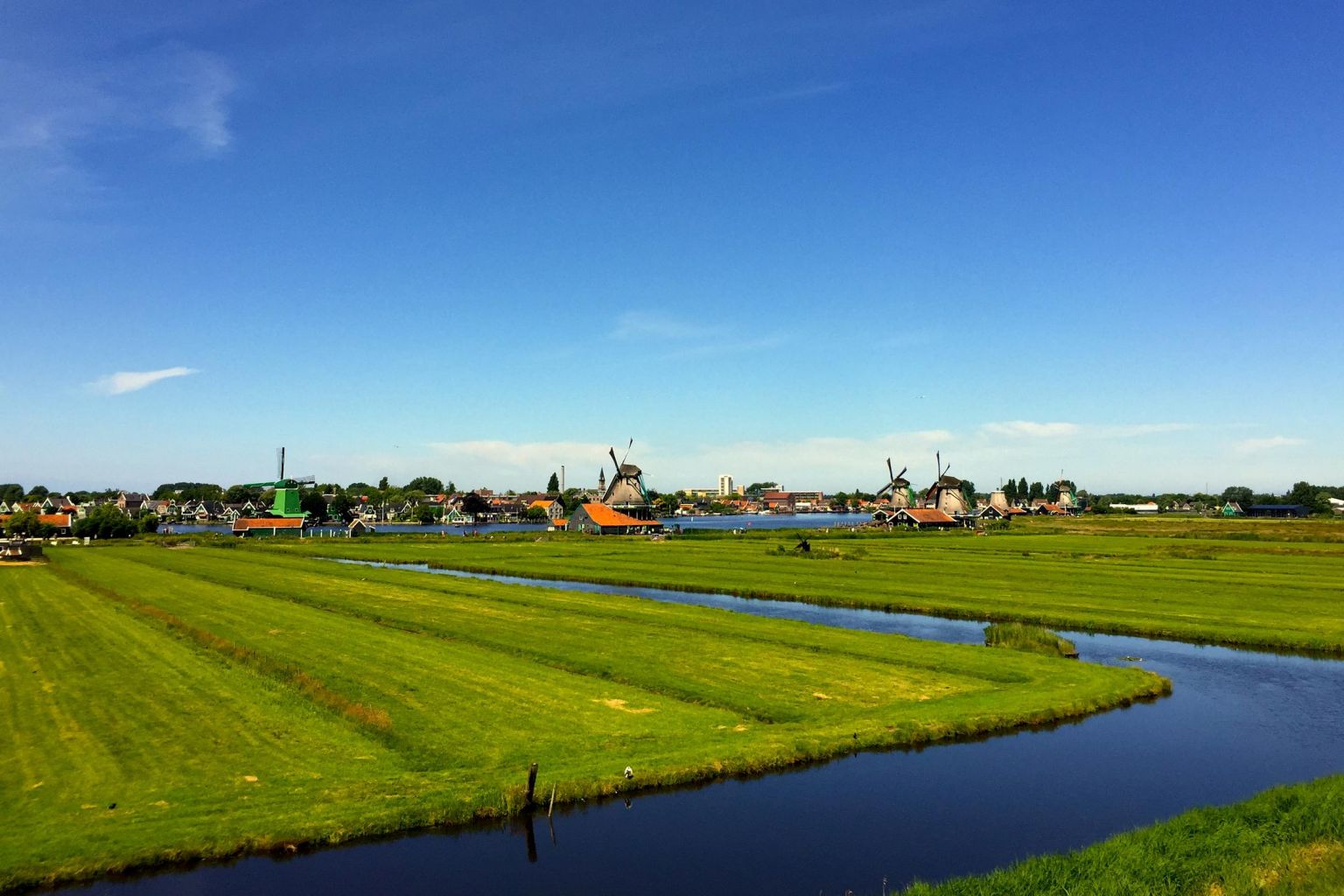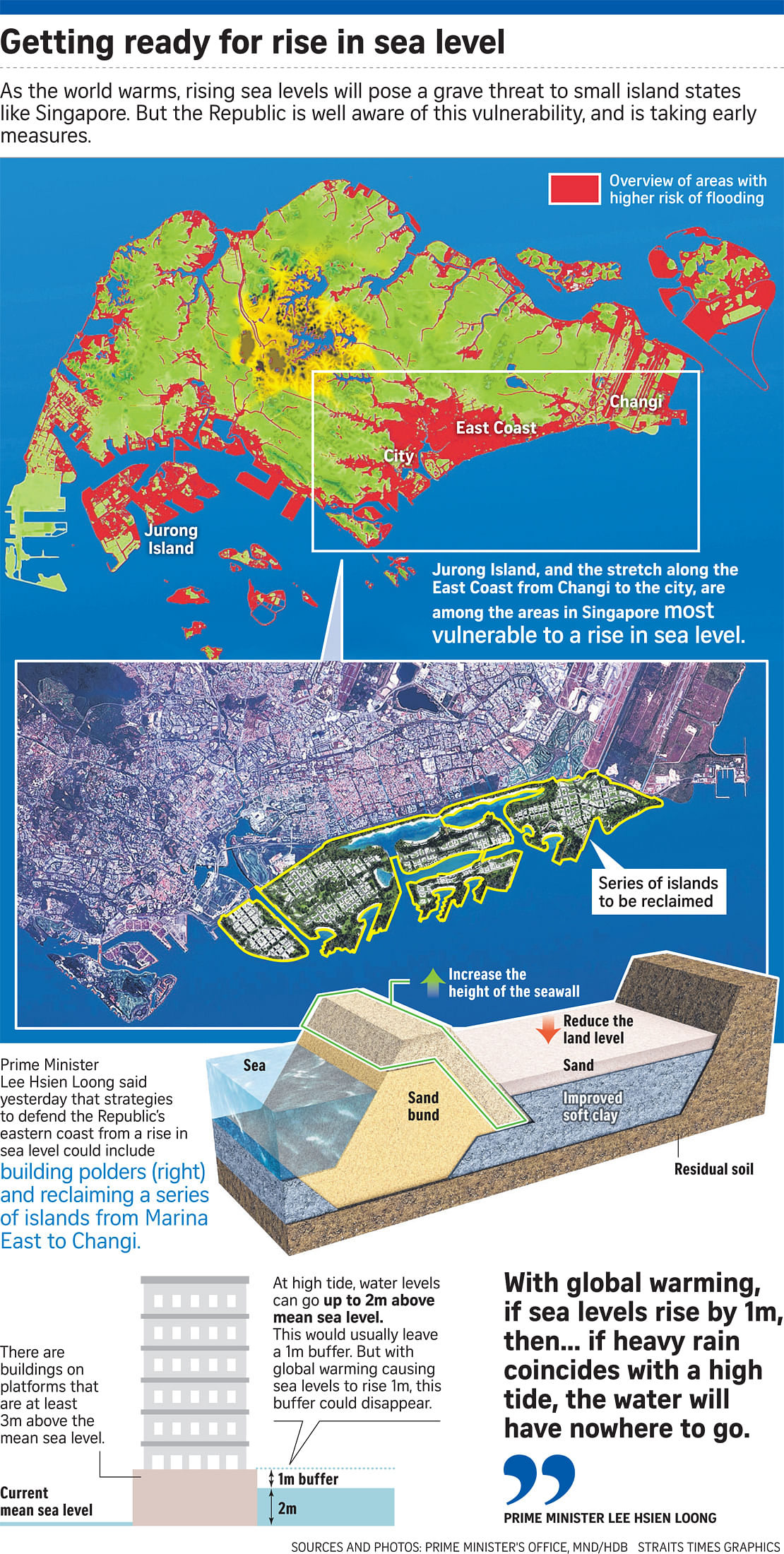Climate change
National Day Rally 2019: Major engineering works under consideration to tackle threat
Sign up now: Get ST's newsletters delivered to your inbox

Polders in the Netherlands. Polders built along Singapore's eastern coastline could also protect the Republic from sea-level rise in a way that would also allow it to gain more land.
PHOTO: MINISTRY OF COMMUNICATIONS AND INFORMATION
Follow topic:
Rising sea levels are an existential threat for Singapore, and the Republic is considering major engineering works to tackle this.
Strategies being looked at include carrying out empoldering, a land reclamation technique, along Singapore's eastern coast, as well as reclaiming a series of offshore islands there, said Prime Minister Lee Hsien Loong yesterday.
Emphasising that all options will be carefully considered, Mr Lee also highlighted why sea-level rise is an issue that Singapore has to prepare for in earnest.
He said: "We cannot lose a big chunk of our city and expect the rest of Singapore to carry on as usual."
Other than tackling the threat of rising sea levels, the strategies that Mr Lee highlighted could have other benefits for Singapore, such as boosting the nation's water security and increasing land availability.
Reclaiming a series of offshore islands from Marina East to Changi could, for example, help increase Singapore's water resilience, said Mr Lee. "(We could) connect them up with barrages and create a freshwater reservoir, similar to Marina Reservoir. National water agency PUB will like this solution, because it will enhance our water resilience," he said.
Polders built along Singapore's eastern coastline could also protect the Republic from sea-level rise in a way that would allow it to gain more land as well.
Polders refer to tracts of land that lie below sea level. They are constructed by first building a dyke around the area to be reclaimed and then draining water from it. Water levels in the polder are controlled by drains and pumps. "(This is) new land which we can use for housing and other purposes," Mr Lee said.

Similar to how adding ice cubes to a glass of water raises the water level, melting land ice could substantially contribute to sea-level rise as the world warms.
Singapore's Second National Climate Change Study has predicted that the mean sea level is estimated to rise by up to 1m by 2100.
But Mr Lee cautioned that scientists' estimates for this timeline have been going up. "Sea levels may quite possibly rise higher and faster than that," he said.
Already, PUB has planned for a second pump house at Marina Barrage, the dam enclosing the Marina Reservoir, he said. The existing pump house has seven pumps which help to pump water out of the reservoir and into the sea when it rains heavily during high tide. This protects the city from flooding, as the falling rain can then drain into the reservoir.
"When sea levels rise, the pump house will not be enough. We will need to build a second pump house on the opposite end of the Barrage," Mr Lee said. He added that while engineering solutions are available, they will come at an estimated price tag of $100 billion or more.

